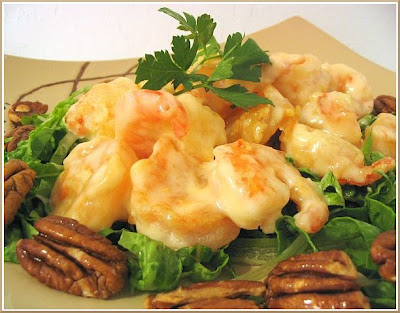Originally I wanted to bake something for Meeta's birthday, then the plan switched to making ricotta pancakes; the idea being a "virtual" birthday breakfast. I used an Everyday Food recipe and while they had the right idea, the recipe was seriously lacking. I definitely couldn't share a dish I wasn't proud of for Meeta's event so I wanted to make something else. Since the Monthly Mingle is a party theme, I finally went with some savory empanadas for an snack/appetizer. Happy Birthday Meeta, I hope you had a great day. :)
- I'm not really sure what the baking powder did, made the crust lighter I suppose. Next time I will omit it and see what happens.
- Some recipes didn't call for baking powder but used vinegar instead. I'm not sure what that would do, maybe make the crust tender also?
- I didn't really figure out how to crimp the edges of the empanada, like Deb, her's are so gorgeous. Maybe next time I'll figure it out.
- I think I may not have rolled out the dough thin enough. If you roll out the wrappers to 1/8-in thick I suspect you may be able to get more empanadas out of the recipe.
Pork Picadillo Empanadas
Filling
About 2 C pork picadillo
Dough
Adapted from Mark Bittman's The Best Recipes in the World

1 3/4 C flour
1/4 C finely ground cornmeal (original recipe called for masa harina which I didn't have)
1/2 tsp baking powder
1 tsp salt
1 egg, lightly beaten
6 tbsp butter, cold
3 – 5 tbsp milk
Egg wash: 1 egg lightly beaten
Mix the flour, cornmeal, salt, and baking powder in a bowl. Using a food processor, pastry blender, or two forks, cut the butter into the dry ingredients until it resembles coarse meal and the butter pieces are no bigger than a pea.
In the center of the dry ingredients, make a well and pour in the beaten egg and 3 tbsp of milk. Bring the dough together, if it is too dry and resists, add some more milk.
Turn the mixture onto a work surface and gently knead (only enough to bring it together, don't overwork the dough) and bring the dough into a cohesive mass. Cover with plastic wrap and refrigerate for at least an hour.
Preheat the oven to 375ºF.
Divide the dough in half and each half into 8 or 9 even pieces. I got about 18 4-in wrappers out of the dough. Roll each piece out into about a 4in wrapper. Plop about a mounded tablespoon of filling in the center. Fold and seal the crescent, and crimp the edges with a fork (I skipped this) or crimp it in a decorative way (couldn't figure out how to do this).
Brush each empanada with some beaten egg and poke some holes on top for the steam to escape. Bake at 375ºF for about 30 minutes, or until the tops are golden brown.



























